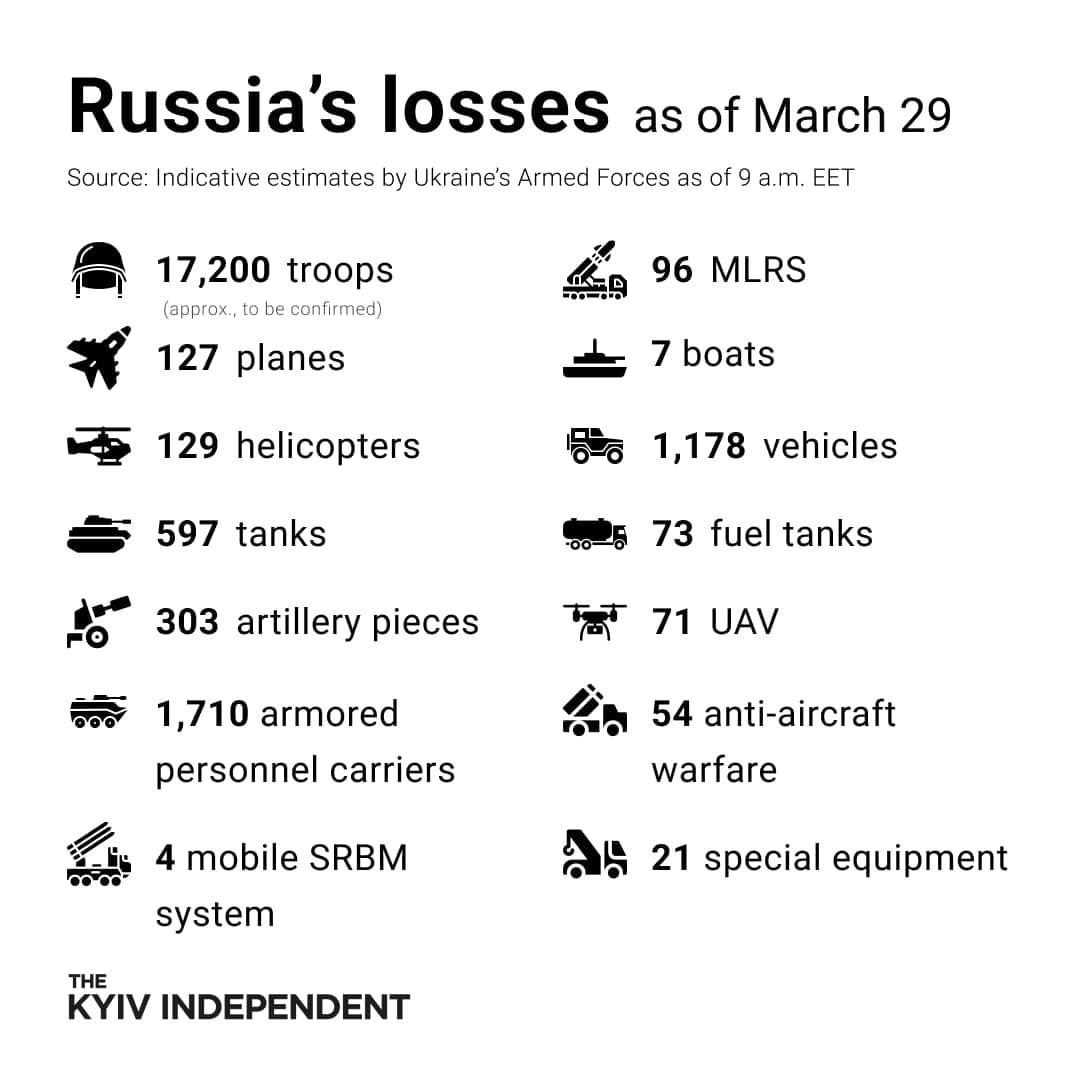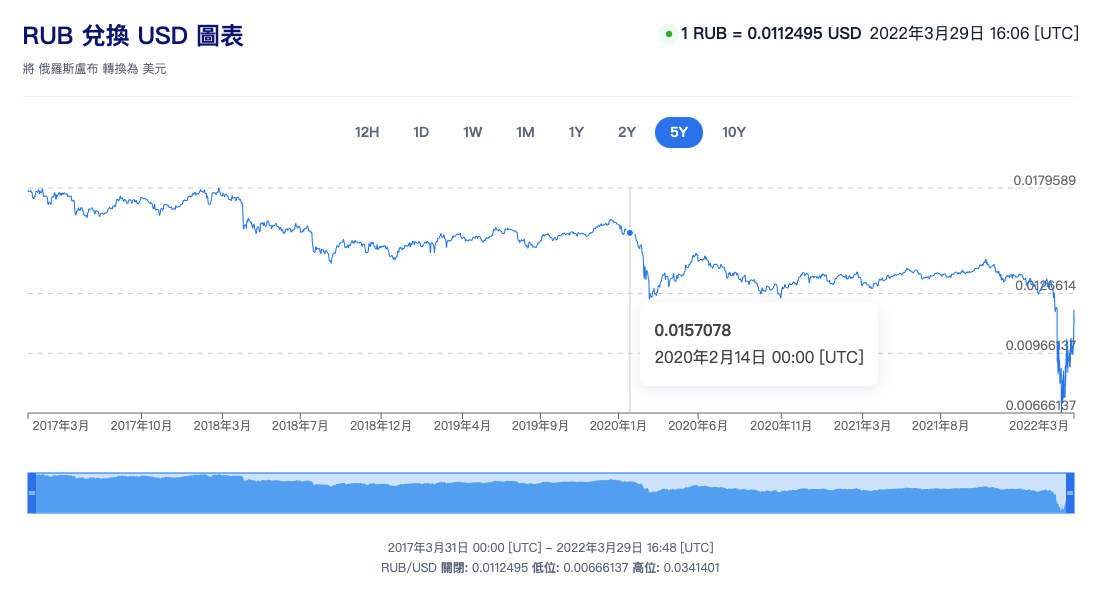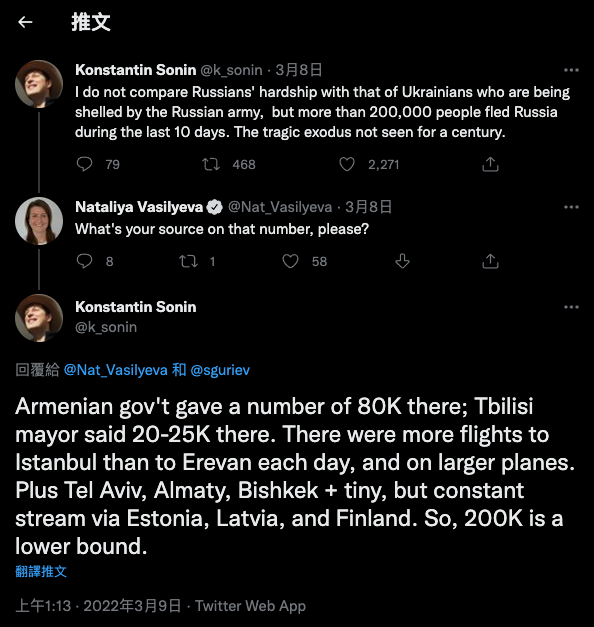Looking at the "first stage" of Ukraine's defense war from the data
More than a month after Russia officially invaded Ukraine, after Russian Defense Minister Шойгу officially announced the completion of the "first phase of military operations", the Russian army seems to be focusing its attack on the Donbas region of Udon. To explain why the Russian army abandoned the strategic focus originally set by Russian President Vladimir Putin and went straight to Kiev under the status quo that it declared a "great victory", it may be possible to see the clues from the data from the war to date.
In terms of the death rate of soldiers, in just one month, the Russian military officially admitted that the death toll has exceeded 1,300. If the estimates of the United States and NATO are accepted, the number will soar to 3,000 to 15,000, which is far more than The total death toll of Russia 's two Chechen wars is much closer to or even surpassed the total death toll of the ten-year war in Afghanistan during the Soviet era.
Especially when there are many high-level generals in the Russian army killed in action, seven of the 20 Russian army generals who were sent to command the territory of Ukraine have been killed so far , and more Russian military academy-level commanders have also died in Ukraine . The Russian invading army—both at the grassroots and at the command level—adds a psychological shadow.

The high death rate and low morale, coupled with the actual offensive obstacles encountered, directly led to the destruction of the Russian army's heavy weapons on the front line and even the capture of the Ukrainian army. According to the figures of the Ukrainian army, the Russian army has lost nearly 600 tanks, 3,000 armored or general vehicles, and more than 200 various fighters and helicopters. Soviet/Russian losses in the war.
Even if it is only inferred from the official Russian figures, the current strength of the Russian army has indeed weakened to a certain extent compared with the Cold War period, but when confronting the Ukrainian defenders who were weaker than themselves, there were still a large number of casualties and losses in a short period of time, which can be said to be given to the Russian army. And a major warning signal for the decision-making level of the Russian government.
When Russia loses on the battlefield, the domestic situation is not optimistic either. Russia has spent the past few years trying to rebuild an economy battered by the 2014 financial crisis and Western sanctions over Russia's occupation of Crimea the same year. But after a full-scale invasion of Ukraine , Russia's fragile economy has been hit by a new round of sanctions.

For the Russian people, the biggest impact of the sanctions is the severe devaluation of the Russian currency, the ruble, which once depreciated by nearly 25%. Compared with the exchange rate before Russia occupied Crimea in 2014, it depreciated by more than 75% . The "ruble crisis" made people's savings go to waste, and people lined up to buy food to avoid skyrocketing prices.

Even though Russia is a "democratic dictatorship", the social atmosphere under dictatorship is no match for public grievances. Whether it is against the war itself, or influenced by the retrogression of experience brought about by the war, it is certain that not everyone fully supports the decision of the Russian leadership for "military action", and the opposition is growing. Tens of thousands of dissenting voices—either marching and demonstrating, or expressing their disapproval in the few remaining media footage—were forcibly suppressed, and even the appearance of “kill the wrong, never let it go,” or even slogans supporting the war without a word. Arrested as well. Since the start of the war , Russia has arrested more than 15,000 demonstrators in the country, and many members of the Russian opposition have also been arrested and sentenced to prison, but the domestic public's open anti-war voice does not seem to be quelled.

For a part of the Russian population - especially those with professional or even financial expertise - leaving Russia is the only way out. Even though many countries have banned flights into Russia, at least 200,000 Russians have left Russia through Central Asia, Turkey and other places that have not yet banned flights since the war. For Russia, which is facing an economic crisis and is preparing to recruit again, the loss of manpower (talents) will be a considerable blow.
Perhaps it is the military, the national economy, or the combination of the two, that is why the Russian decision-makers had to adjust their strategic focus and narrow their strategic intentions in order to speed up the end of the war.
📓 The World War II historical creation series "Gerhard Neumann in the Allies" is serialized
👏Please "clap your hands" for support, support me to continue to create
🌟 Featured Article List
Like my work? Don't forget to support and clap, let me know that you are with me on the road of creation. Keep this enthusiasm together!